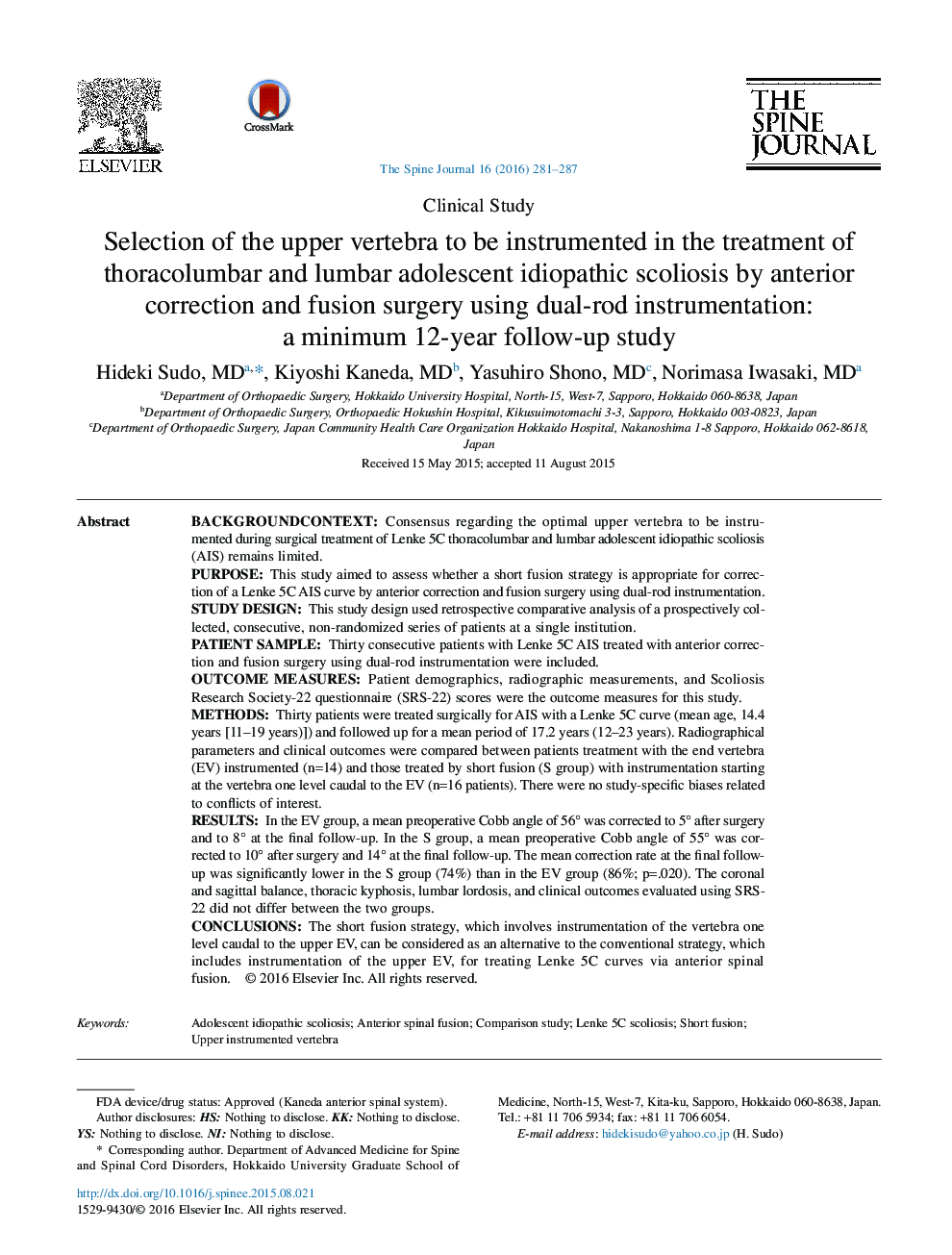| کد مقاله | کد نشریه | سال انتشار | مقاله انگلیسی | نسخه تمام متن |
|---|---|---|---|---|
| 4096283 | 1268556 | 2016 | 7 صفحه PDF | دانلود رایگان |
BackgroundContextConsensus regarding the optimal upper vertebra to be instrumented during surgical treatment of Lenke 5C thoracolumbar and lumbar adolescent idiopathic scoliosis (AIS) remains limited.PurposeThis study aimed to assess whether a short fusion strategy is appropriate for correction of a Lenke 5C AIS curve by anterior correction and fusion surgery using dual-rod instrumentation.Study DesignThis study design used retrospective comparative analysis of a prospectively collected, consecutive, non-randomized series of patients at a single institution.Patient SampleThirty consecutive patients with Lenke 5C AIS treated with anterior correction and fusion surgery using dual-rod instrumentation were included.Outcome MeasuresPatient demographics, radiographic measurements, and Scoliosis Research Society-22 questionnaire (SRS-22) scores were the outcome measures for this study.MethodsThirty patients were treated surgically for AIS with a Lenke 5C curve (mean age, 14.4 years [11–19 years)]) and followed up for a mean period of 17.2 years (12–23 years). Radiographical parameters and clinical outcomes were compared between patients treatment with the end vertebra (EV) instrumented (n=14) and those treated by short fusion (S group) with instrumentation starting at the vertebra one level caudal to the EV (n=16 patients). There were no study-specific biases related to conflicts of interest.ResultsIn the EV group, a mean preoperative Cobb angle of 56° was corrected to 5° after surgery and to 8° at the final follow-up. In the S group, a mean preoperative Cobb angle of 55° was corrected to 10° after surgery and 14° at the final follow-up. The mean correction rate at the final follow-up was significantly lower in the S group (74%) than in the EV group (86%; p=.020). The coronal and sagittal balance, thoracic kyphosis, lumbar lordosis, and clinical outcomes evaluated using SRS-22 did not differ between the two groups.ConclusionsThe short fusion strategy, which involves instrumentation of the vertebra one level caudal to the upper EV, can be considered as an alternative to the conventional strategy, which includes instrumentation of the upper EV, for treating Lenke 5C curves via anterior spinal fusion.
Journal: The Spine Journal - Volume 16, Issue 3, March 2016, Pages 281–287
